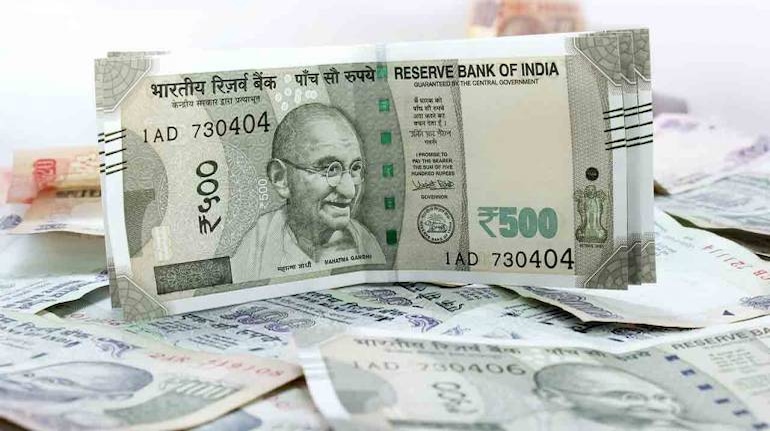



A sharp increase in dollar demand, global trade war risks along with a strengthening US dollar are reasons that could be attributed to the rupee’s fall, multiple analysts told Moneycontrol.
The currency was in focus on Monday, September 10, 2018, after it breached past 72.50 per US dollar, falling to an all-time low of 72.67 per US dollar. It failed to build on some recovery which was visible on Friday.
The fall in Indian rupee has also pushed its value lower by 5 percent so far in this month itself, while for 2018, the total fall stood at 13 percent.
An immediate impact was also visible on the bond yields, which rose to their highest levels in four years, according to a CNBC-TV18 input.
Going forward, analysts added that there could be some more pain left. Here’s a gist of what are their views are on the currency.
Weakness in emerging markets
Experts think that a global sell-off among emerging market currencies such as Argentina, Brazil, and South Africa, among others, could be one of the reasons.
“The rupee is getting clobbered along with other currencies in the emerging markets pack. High oil prices is affecting the currency idiosyncratically, which is an added factor. Overall, it is the selloff in EM currencies in Argentina, China, South Africa and Brazil, among others that is driving the selloff,” said Anindya Banerjee, Deputy Vice President, Currency Derivatives at Kotak Securities.
Among EM currencies, the Turkish lira plummeted to fresh lows on the back of an economic crisis. This spilled over to Argentina as well, where the peso’s value more than halved. The interest rates are the highest than anywhere else.
US economy
Additionally, a strengthening US economy, which could lead to more rate hikes in this year is seen impacting the rupee. The US central bank, Federal Reserve, had indicated earlier that an improving US macro situation could push it to hike interest rates. In such a scenario, attractive rates could attract more money from foreign institutional investors (FIIs) and push them to park money in EMs.
The US jobs data showed addition of 201,000 jobs, and the unemployment rate stayed at 3.9 percent.
"The US non-farm payroll data being better than expected is making the market expect two more interest rate hikes by the US Federal Reserve. One could happen in September and one in December meet. The RBI is nearly non-existent (in its intervention in the currency market) and hence there is speculative buying happening in the market," said Rushabh Maru, Research Analyst at Anand Rathi Shares and Stock Brokers.
Domestic economy
Back home, few of the macro indicators have not been in best of the health and that, experts said, could have led to the sharp selloff as well.
For instance, Divya Devesh, head of Asean and South Asia FX research at Standard Chartered Bank told CNBC-TV18 that there is a difference in the way rupee fell in 2013, 2015 and 2018.
“This weakness is not driven by speculator money, but new reality is being absorbed in terms of trade and current account deficit (CAD). Trade deficit being at USD 18 billion is not sustainable. A weakness of 8 percent in real effective exchange rate (REER) was necessary in order to ensure that trade deficit doesn’t increase,” he said.
Importer demand
Banerjee of Kotak Securities further explained that increased demand for dollar among importers is also weighing on the currency.
“Exporters had hedged their positions when the rupee was trading below 69 per dollar, while importers were grossly unhedged. So, the demand is now coming in from importers, while exporters are looking to cancel it,” he further explained.
Where is it headed?
While the currency managed to breach past key levels of 71 and 72 per dollar quickly, experts anticipate that there could be more pain ahead. While experts such as Bhaskar Panda of HDFC Bank believe that there could be more downward moves, it is difficult to predict a stop.
“Technical charts show levels of 74.58 or 74.60 per US dollar,” Panda told CNBC-TV18 as well. Having said that, the fall has been very over-extended, he told the channel.
IDBI Capital recently told Moneycontrol that the government’s spending mode in an election year could also weigh on the currency.
“Increase in government spending due to this being an election year is also weighing on sentiment. There are fears among participants of the currency hitting 75 per dollar as well,” AK Prabhakar, Head of Research at IDBI Capital had told Moneycontrol.
"We are looking at the new low for rupee at around 73.20 to the dollar. We expect this weakness to continue as so far there has not been any intervention from RBI," Gaurang Somaiya, Currency Analyst at Motilal Oswal Securities told Moneycontrol.
Discover the latest Business News, Sensex, and Nifty updates. Obtain Personal Finance insights, tax queries, and expert opinions on Moneycontrol or download the Moneycontrol App to stay updated!
Find the best of Al News in one place, specially curated for you every weekend.
Stay on top of the latest tech trends and biggest startup news.